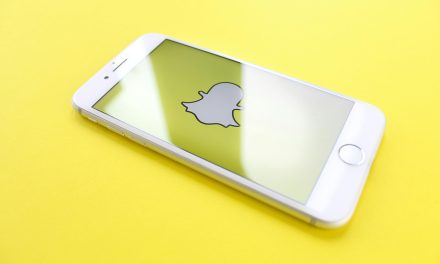With mobile OEMs such as Xiaomi, Vivo, realme, and Oppo accounting for 4 of the top 5 mobile brands in India with a 63% market share, traditional mobile marketing methods might not suffice.
India’s Android-driven mobile market is exploding. Having occupied a share of 95.26% of the mobile operating system market in India in 2022 (Source: Statista), the Android user-base is already projected to hit the 850 million mark by 2025 (Source: ICEA). This surge creates a golden opportunity for app marketers, but navigating the landscape can be tricky.
It’s time to look beyond the obvious in the world of mobile advertising. Mobile original equipment manufacturer (OEM) advertising, which stands as a beacon of opportunity for mobile marketers, should be a part of everyone’s marketing mix.

OEMs in the Android space – such as Xiaomi, Samsung, and Huawei – design and produce smartphones, incorporating their own software, launchers, and their own app stores (aka alternative app stores) for software distribution. They also develop their own native apps, like browsers, music players, and video players, apart from creating advertising networks and infrastructure, offering app publishers unique advertising avenues beyond conventional channels.
Mobile OEM advertising rightfully commands a major role in today’s app marketing strategies. Let’s understand this in detail.
At its core, it allows app developers, brands and mobile marketers to utilize the strategic positions of leading OEMs in the mobile ecosystem. This is facilitated by new age mobile growth marketing companies specializing in OEM advertising who empower developers to promote their apps directly on OEM devices. As a result, they are able to attain a competitive edge through precise targeting, reaching untapped audiences and new markets, achieving higher user acquisition at a lower cost, and maintaining a fraud-free ecosystem. They also gain complete control over advertising reach by the OEM.
However to be able to utilize all of this, we need to bust some misconceptions pertaining to mobile OEM advertising.
The Misconception: There’s a perception that mobile OEM advertising is merely factory preloading apps on mobile devices. That it lacks optimization opportunities on display campaigns, offers limited targeting options, focuses on Asian markets, restricts advertising to mobile OEM stores (alternative app stores) and does not support branding campaigns.
The Reality: Mobile OEM advertising extends beyond app preloads, such as dynamic preloads, which alone are highly effective for app install growth, to encompass various other strategies, including display advertising in various ad formats. It saw a 7% year-on-year increase in the global smartphone market in Q4 2023, reaching 323.2 million units (Source- Counterpoint Research). By partnering with mobile OEM specialists, advertisers can leverage this extensive reach for branding campaigns, establishing a significant brand presence and engaging with a diverse, global audience.
The Misconception: There is a common belief that mobile OEM advertising is solely focused on dynamic preloads and pre-installed apps.
The Reality: Although dynamic preloads are a powerful strategy that effectively places apps front and center for users, mobile OEM advertising also encompasses various display formats such as video splash screens, in-browser recommendations, minus one screens, within native apps, and through app icons. This strategy excels by offering targeted placements and ensuring brand-safe practices on OEM platforms, expanding its reach and effectiveness.
The Misconception: Some believe that mobile OEM inventory, encompassing advertising space directly on OEM devices, lacks targeting capabilities and effectiveness.
The Reality: There are mass targeting capabilities to maximize campaign reach and effectiveness within mobile OEM advertising. This includes, retargeting, geographic targeting, keyword targeting, appographic targeting, device type targeting, social demographic targeting, user behavior targeting, app category targeting and analysis of time spent on app categories.
By utilizing a mobile OEM specialist, mobile marketers can make sure all targeting adheres to strict data protection and privacy standards.
The Misconception: There’s a prevailing belief that mobile OEM advertising is exclusively limited to alternative app stores.
The Reality: Yes, advertising on alternative app stores is crucial in mobile OEM advertising, but it also includes promoting apps directly on OEM devices and within Google Play and native apps. This comprehensive approach enhances app discoverability across multiple channels, simplifying marketing efforts and maximizing visibility and success without additional tech developments.
The Misconception: It’s a highly common misunderstanding that branding is not a component of mobile OEM advertising.
The Reality: Yes, advertising on alternative app stores is crucial in mobile OEM advertising, but it also includes promoting apps directly on OEM devices within the launcher environment or native apps. This comprehensive approach enhances app discoverability across multiple channels, simplifying marketing efforts and maximizing visibility and success without additional tech developments.
The Misconception: SomeRPG game developers are reluctant to run campaigns on OEM devices, as they believe their games are too resource-intensive for these phones.
The Reality: Quite the contrary, OPPO excels in gaming with features like Hyper Boost and Game Space. Hyper Boost enhances the device’s processing and memory management, ensuring smooth, lag-free gaming. While Game Space reduces background app activity, lightening the system’s load, which is especially useful for the detailed and long gameplay of RPGs. Devices from Xiaomi, Huawei, and Vivo offer similar enhancements with Game Turbo, Game Space, and AI Game Mode, respectively, elevating gaming experiences across several OEM platforms.
A classic case in point is BYJU’s success with Mobile OEM Ads in India. As India’s leading online learning platform (with 80 million users), it capitalized on the surge in online education during the pandemic. With an aim to expand their reach and acquire new students seeking online courses, its partnership with a leading app growth company focusing on mobile OEM advertising campaign helped it to amass over300,000 new app installs, 30% increase in app registrations and a 80% reach of Android devices in India. It’s time to reimagine your mobile marketing strategy with mobile OEM advertising and reap the most out of it by collaborating with a specialist who can help marketers and developers to navigate this complex landscape, ensuring that their campaigns are precisely targeted and optimized for the long-term growth of their mobile app.

















